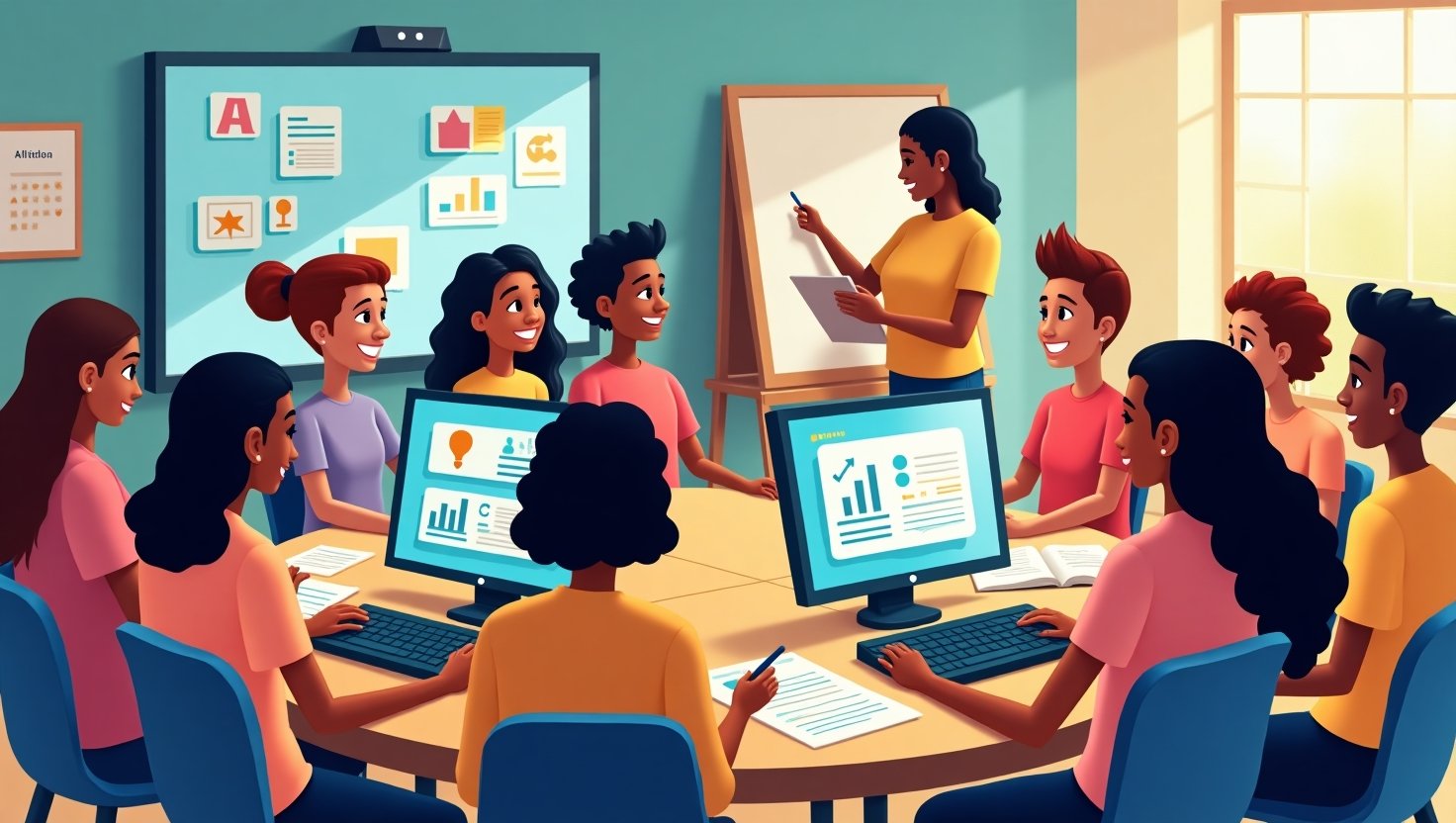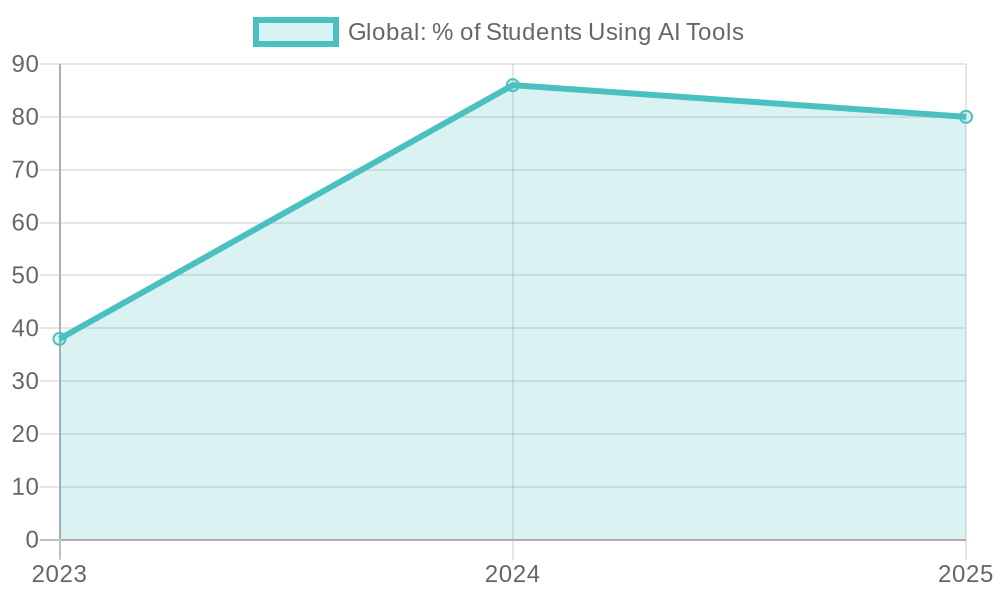In the ever-evolving landscape of education, artificial intelligence (AI) is making significant inroads within the academic institutions of China. Recent statistics indicate that approximately 60% of university students in China report frequent use of AI tools, illustrating a remarkable shift towards a more tech-driven academic experience. Institutions are recognizing the transformative potential of AI, not just as a supplementary tool but as a core component of the learning process. With an impressive 1% of faculty and students claiming never to have engaged with AI technology, the integration of AI is not just a trend; it is a defining characteristic of contemporary education in China.
As the demand for AI-related skills continues to surge, so too does the opportunity for students to enhance their capabilities through innovative AI applications. These AI education trends signal an optimistic outlook for the future of education as universities embrace AI, striving to equip students with essential skills that will empower them in a competitive job market where over 80% of job openings by 2025 are expected to favor candidates with AI proficiency. This article explores the extent of AI adoption in Chinese universities and the implications for both students and the broader educational framework.
Embracing the Future: How AI is Revolutionizing Education in Chinese Universities
User Adoption Data: AI in Chinese Universities vs. Global Trends
Recent statistics showcase the growing integration of artificial intelligence (AI) in educational settings, reflecting trends in AI technology adoption and curricular integration in universities worldwide. This is especially true for university faculty and students in China. The following points summarize current trends in AI adoption, highlighting unique aspects of the Chinese academic landscape compared to global trends.
AI Use in Chinese Universities
- Approximately 60% of university students in China report using AI tools frequently. This indicates a strong trend towards digital integration in learning and AI-driven learning solutions.
- Notably, only 1% of faculty and students stated they have never used AI technologies. This underscores the widespread acceptance of AI in academic settings and the significance of AI-enhanced education.
- Top institutions, such as Peking University and Shanghai Jiao Tong University, are actively expanding enrollment in AI-related programs. This reflects a governmental push towards developing expertise in AI education initiatives.
Global Trends in AI Adoption
- Global Statistics: A 2024 survey shows that 86% of university students worldwide utilize AI tools for their studies. In North America, around 84% of faculty integrate AI into their teaching or administrative roles. This reflects the growing importance of AI skill development in educational contexts.
- In the UK, over 90% of university students reported using AI tools. This marks a significant rise from the previous year, showcasing global AI education trends.
Comparative Insights
The data reveals several key differences:
- China’s Strategic Expansion: China’s commitment to increasing enrollment in AI programs sets it apart as a nation prioritizing AI education. This is part of its overall development strategy aimed at enhancing digital literacy among its workforce and reflects the impact of AI in higher education.
- Lower U.S. Adoption Rates: U.S. surveys indicate that American students have among the lowest usage rates globally, revealing significant institutional resistance to AI tools in education.
Insights into Institutional Initiatives
The Chinese government actively supports AI integration into educational frameworks, aligning national strategy with emerging global trends. In summary, AI adoption in Chinese universities reflects proactive educational initiatives and high engagement levels, possibly setting a precedent in the global landscape that other nations might follow in adopting AI technologies in education.
The Role of Government Support and Open-Access Tools in AI Literacy
As the educational landscape in China evolves, the significance of digital literacy, particularly in the context of artificial intelligence (AI), has become increasingly paramount. Government support is crucial in promoting AI literacy among students, with initiatives that enhance accessibility to AI technologies and educational resources. By implementing policies that encourage universities to adopt AI curricula and providing funding for technological advancements, the Chinese government is taking active steps to ensure that students are well-equipped with the skills necessary for a future dominated by AI.
Open-access tools play a pivotal role in this initiative. These resources allow students from various backgrounds to engage with AI technologies without the burden of financial constraints. Platforms offering free AI courses, software tools, and online communities foster an environment where students can experiment, learn, and create with AI technologies. Such tools democratize access to education, enabling a broader range of students to develop their technical skills and creativity.
Notably, the sentiment of Liu Bingyu encapsulates the essence of this digital transformation: “The ability to interact with machines is one of the most important skills in today’s world.” This statement underlines the necessity for educational institutions to focus on developing students’ capabilities in interacting with AI tools, thereby preparing them for their future careers.
Through collaborative efforts between the government and educational institutions, a cultural shift toward embracing technology in learning is underway. This not only enhances students’ digital literacy but also cultivates a generation of adept individuals who are not only consumers of technology but are also equipped to innovate and lead in the evolving job market. As the integration of AI becomes deeper within educational frameworks, the potential for a digitally literate society grows, paving the way for advancements in various sectors.

| Region | Percentage of Job Openings Requiring AI Skills | Source |
|---|---|---|
| Global | 4.1% of U.S. job postings require AI or machine learning experience. | Ringover |
| China | 25% of “new economy” job openings on Maimai platform are directly related to AI. | South China Morning Post |
- Integrating AI into Curricula: Some universities are adapting to the presence of AI by including it in their teaching methods and assessments. For example, Arizona State University teamed up with OpenAI to offer AI tools that improve learning and prepare students for a world where AI is common. This approach helps ensure that students learn how to use AI effectively, rather than fearing it as a threat to their academic integrity.
Conclusion: Embracing the Future of AI in Education
The integration of artificial intelligence (AI) in education represents a compelling frontier, particularly evident in Chinese universities. Ongoing initiatives within these institutions highlight a commitment to enhancing AI literacy among students, preparing them for the demands of an increasingly competitive job market.
Furthermore, collaboration among stakeholders—including industry leaders and tech innovators—cultivates a dynamic educational environment that promotes creative problem-solving and critical thinking. As AI technology continues to evolve, its potential to transform personalized learning processes offers educators fresh opportunities to adapt their teaching methods to better meet individual student needs.
The global implications of these advancements are significant, as many countries observe and draw lessons from China’s progressive educational model. By emphasizing digital literacy, ensuring accessibility to AI tools, and promoting ethical usage, a new generation is being shaped—one that does not merely consume technology but actively engages and innovates with it.
In summary, as education continues to evolve with AI at its core, the prospects are vast. By fostering a culture of innovation and collaboration, we empower students not only to become proficient users of AI but also to lead in the creation of future innovations. As institutions adapt to these changes, we can anticipate a future enriched by the transformative potential of AI, developing a generation ready to thrive in a complex, technology-driven world.
For further insights into AI’s role in enhancing education and employability, consider reading articles from EdTech Magazine and The Journal.
Perspectives from Key Stakeholders on AI in Education
The integration of artificial intelligence (AI) into education has sparked discussions among various stakeholders regarding its impact on teaching and learning. While we could not secure specific quotes from Lorraine He and Gunisha Aggarwal, here are relevant insights from a range of experts that underline the importance of AI in education:
-
Cathy Collins, a library and media specialist, notes the urgency for incorporating AI literacy in education:
“Failure to incorporate AI literacy right now may leave students inadequately prepared for the future.”
-
Dr. Brooke Morgan, Coordinator of Innovative Learning, emphasizes the role of teachers in navigating AI’s emergence:
“Many teachers know their students and know how their students write, so they can better distinguish authentic student work from AI-produced content.”
-
Dr. Joshua Elder, advocates for educators to develop their own understanding of AI:
“Educators should have space to ‘play, unpack, and analyze’ AI tools to critically evaluate how it produces false outputs.”
-
Dr. Galin Tzokov, from Plovdiv University, raises concerns about educational paradigms shifting due to AI:
“Generative AI marks the end of an educational paradigm, challenging the ritualistic foundations of pedagogy—homework, essays, and evaluations—and necessitating new rituals that position AI as a partner in learning.”
These insights emphasize the pressing need for education systems to adapt and embrace AI technologies, ensuring that students and educators alike are equipped to thrive in an AI-driven future.
The Impact of AI Literacy on Employability
In today’s dynamic job market, AI literacy has emerged as a crucial competency that significantly boosts employability. As organizations increasingly rely on artificial intelligence to streamline operations, enhance decision-making, and improve customer experiences, they are seeking candidates who possess AI-related skills. A compelling statistic underscores this trend: by 2025, a staggering 80% of job openings are expected to list AI-related skills as a significant advantage in candidates source. This paradigm shift indicates that proficiency in AI tools and an understanding of machine learning concepts may soon be as essential as traditional skills once were.
The demand for AI talents in various sectors reflects the growing emphasis on technology-driven solutions. Employers are looking for individuals who not only adapt to emerging technologies but also contribute to innovation and problem-solving. Hence, students equipped with AI literacy can significantly enhance their career prospects, standing out in a competitive landscape where digital transformation is well underway.
Furthermore, as educational institutions in China and across the globe prioritize AI education and integration, students gaining knowledge and experience in this area will be better prepared for future challenges and opportunities. The ability to navigate and utilize AI tools effectively positions graduates to succeed in roles that require analytical thinking, creativity, and technical expertise.
In summary, embracing AI literacy is not just about keeping pace with technological advancements; it is fundamentally about preparing for a more competitive job market. As employers increasingly recognize the value of these skills, students who proactively seek AI knowledge will enhance their employability and readiness for a transformative future in the workplace.
The Impact of AI Literacy on Employability
In today’s dynamic job market, AI literacy has emerged as a crucial competency that significantly boosts employability. As organizations increasingly rely on artificial intelligence to streamline operations, enhance decision-making, and improve customer experiences, they are seeking candidates who possess AI-related skills. A compelling statistic underscores this trend: by 2025, a staggering 80% of job openings are expected to list AI-related skills as a significant advantage in candidates source. This paradigm shift indicates that proficiency in AI tools and an understanding of machine learning concepts may soon be as essential as traditional skills once were.
The demand for AI talent in various sectors reflects the growing emphasis on technology-driven solutions. Employers are looking for individuals who not only adapt to emerging technologies but also contribute to innovation and problem-solving. Hence, students equipped with AI literacy can significantly enhance their career prospects, standing out in a competitive landscape where digital transformation is well underway.
Additionally, job postings for algorithm engineers and machine learning specialists saw year-on-year growth of 46.8% and 40.1% respectively, with average monthly salaries exceeding 20,000 yuan. The number of individuals seeking AI-related employment surged by over 200% from the previous year, indicating a strong desire among job seekers to enter this burgeoning field China Daily.
Moreover, a survey revealed that 45.4% of employers consider proficiency in AI tools as a critical office skill, and 12.3% of employees have thought about changing jobs due to inadequate AI training at their current positions China Daily. Students gaining knowledge and experience in this area will be better prepared for future challenges and opportunities, creating a workforce ready to thrive in an AI-augmented economy.
In summary, embracing AI literacy is not just about keeping pace with technological advancements; it is fundamentally about preparing for a more competitive job market. As employers increasingly recognize the value of these skills, students who proactively seek AI knowledge will enhance their employability and readiness for a transformative future in the workplace.

The Role of Government Support and Open-Access Tools in AI Literacy
- Government Initiatives: The Chinese government is actively enhancing AI literacy among students by promoting the adoption of AI curricula in universities.
- Financial Support: Funding for technological advancements in education ensures universities can integrate necessary AI tools into their teaching.
- Accessibility Enhancement: Policies are designed to make AI technologies and educational resources more accessible to students from diverse backgrounds.
- Open-Access Resources: Platforms providing free AI courses and software tools democratize access to education, allowing more students to experiment and learn with AI technologies.
- Learning Environment: Open-access tools create communities where students can collaborate, innovate, and develop their technical skills in AI.
- Cultural Shift: These initiatives foster a broader cultural shift towards embracing technology in learning, preparing students for future careers in a tech-driven job market.
- Skill Development: Emphasizes the importance of developing skills to interact effectively with AI tools, as articulated by experts in the field.

